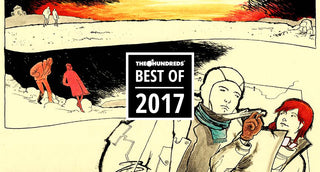It’s been a very long time since I visited the local comic book store on a regular basis and scoured the internet to read message boards and reviews of every single release everyday. Those were fun times, but you grow up, things get in the way, spend too much time on Twitter, and suddenly you’re trying to read more things but never really reading as much as you want.
Thankfully, I spent 2017 kind of, partially, not really making up for the last few years of not reading and keeping up with everything in the comic book and graphic novel world. Gone are the days when I would immerse myself with everything happening in the Marvel and DC universes, but this year, I still found myself getting recommendations from everyone on things to read. As a result, I have a list of ten comic books and graphic novels from this year that I think everyone should check out.
Here they are, presented in no particular order:
Spinning
Tillie Walden (Author, Illustrator) – First Second Books

Spinning is an autobiographical story from 21-year-old author and illustrator Tillie Walden, who dives deep into the emotional toll of being in the competitive figure skating world, the challenges of navigating through your teenage years, what it means to go through heartbreak for the very first time, and the courage to come out to your parents and have honest conversations at a young age. Walden is brilliant at piecing all of these memories together into a coherent narrative that is both heartbreaking and uplifting. It’s a moving story that will have you wandering back to your own adolescence, when nothing seemed to make sense, and everything felt new and challenging.
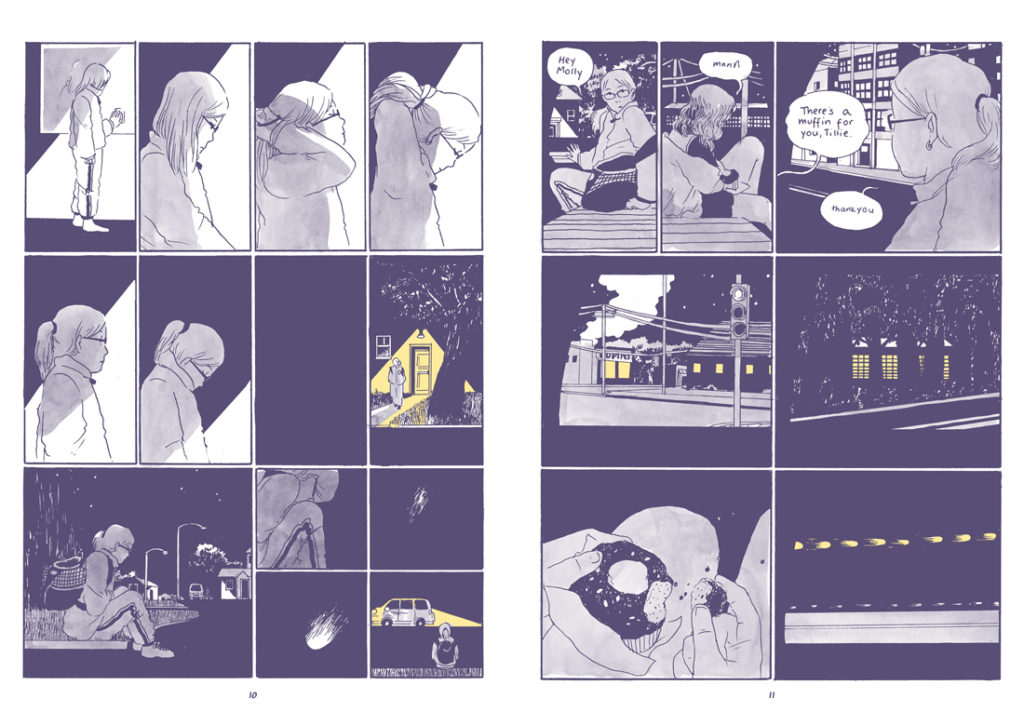
Zegas
Michel Fiffe (Author, Illustrator) – Fantagraphics Books

Michel Fiffe’s mainstream comic book career is finally taking off after the success of his self-published superhero comic book series COPRA—which I also highly recommend. But Zegas started Fiffe’s self-publishing operation Copra Press way back in 2011, and thanks to the wonderful folks at Fantagraphic books, all of his short stories featuring siblings Boston and Emily Zegas navigating the minutiae of everyday life in a futuristic city are collected all in one place.
The artwork alone is worth the price of admission, as Fiffe paints a dystopian future that feels as if he’s constructing movie set-pieces as backdrops for the characters. The slice of life adventures are told in vibrant colors, and Fiffe is ambitious and wonderfully creative and unconventional with the way he narrates a story and navigates the panels on each page. Comic books are supposed to feel unpredictable and fun. Fiffe feels like the breath of fresh air that this medium has needed for a long time, and it’s nice to see him finally get rewarded with a larger audience after years of quality work.

Batman: The War of Jokes and Riddles
Tom King (Author), Mikel Janin and Clay Mann (Illustrator), June Chung (Colorist) – DC Comics

Tom King’s run on Marvel’s The Vision was incredible. So when I heard he was writing Batman and doing a flashback storyline to the early years of Gotham when The Joker and The Riddler faced off and tore the city apart, I made like the Ultimate Warrior running GIF and checked out the entire eight issue story arc. It did not disappoint. The War of Jokes and Riddles pits two of Batman’s greatest villains against each other. Given that these are two of the wittiest bad guys around, it gives King plenty of room to have fun with the scripts. But the standout story-within-the-story is King’s characterization of Kite Man, a D-List villain in the DC database who literally flies around with a giant kite strapped to him. Kite Man gets his own personal two-issue story arc within The War of Jokes and Riddles, and King gives him an absolutely heartbreaking and tragic origin story. Sometimes it’s the little things that make superhero comics still worth reading.
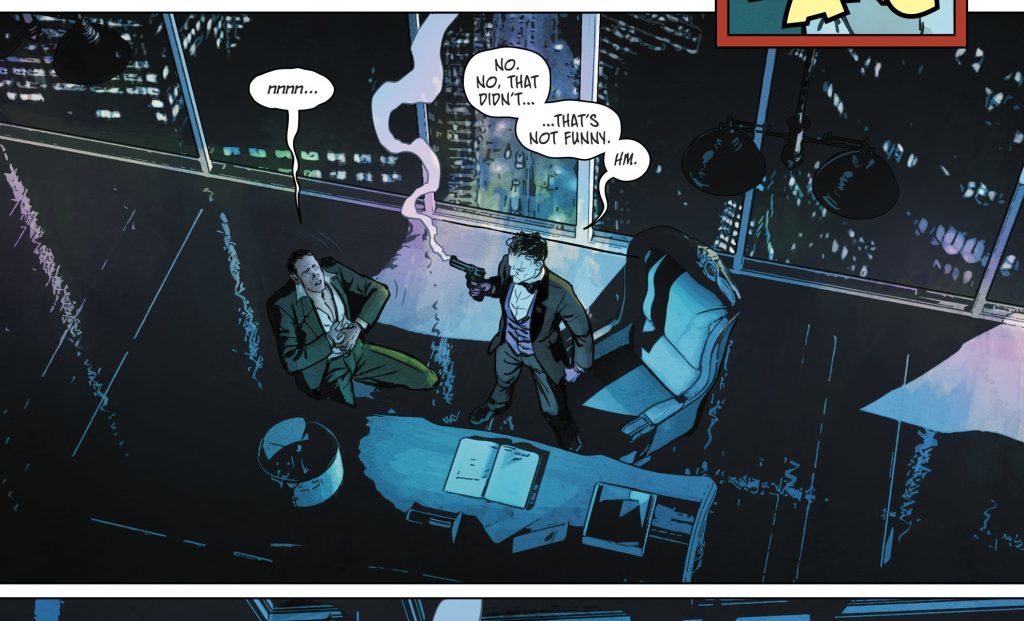
Hostage
Guy Delisle (Author, Illustrator) – Drawn & Quarterly

How do you write and illustrate a 432-page graphic novel about a guy trapped in a room, sleeping on a mattress with little to no interaction with the outside world, and make it even remotely entertaining? That was the challenge facing Guy Delisle, who—over the course of 15 years of reporting—detailed the real life story of the kidnapping of Doctors Without Borders administrator Christophe André in 1997 in Hostage. The graphic novel opens with a scene where André is kidnapped in the middle of the night by a group of armed men and taking to an unknown destination in the Caucasus region. From there, the book grinds the action to a halt and we spend the rest of the book seeing the harrowing experience of being confined in a solitary space for over three months. The story is purposely set up to be devoid of action, and Delisle delicately walks the line of less is more, while keeping the readers engaged. It’s a claustrophobic experience, no doubt, but it’s also a story worth telling, and one told perfectly.

Demon
Jason Shiga (Author, Illustrator) – First Second Books

Jason Shiga was a mathematics major at UC Berkeley, and his work often reads like puzzles that Shiga lays out and challenges himself to solve as he works through a particular story. Demon was a webcomic by Shiga which First Second Books collected into four volumes and published over the course of the last two years. The premise, and I promise it makes more sense when you read it: Our main character Jimmy Yee opens the story by repeatedly trying to commit suicide, only to fail and wake up every time, until he realizes that he has a special power. Whenever he dies, he simply takes over the body of the person closest to him. Having established this concept, Shiga takes Jimmy on a whirlwind adventure that includes the challenge of eluding a shadowy government agency that’s trying to take him down, and a reunion with his daughter, who also has the same abilities as him. The entire body switch concept becomes a wonderful story device that lends itself to plenty different storytelling threads. You’ll laugh, you’ll cringe, and you’ll marvel at just how ambitious, smart and heartwarming the whole story is.

Sex Criminals
Matt Fraction (Author), Chip Zdarsky (Illustrator) – Image Comics

When Sex Criminals made its debut in 2013, Time magazine made it their number one comic book/graphic novel of the year. Flash forward four years, and four volumes collecting the first 20 issues later, and this ongoing series still feels like a fresh and rewarding read every time. I was a little skeptical at first whether the premise—our two main characters, Jon and Suzie, can freeze time, like literally, when they orgasm—would be too tacky or over the top, but Fraction has used this series to explore the many different sides of what it means to be in a relationship, but also what it means to be alone. It also never stops having fun. In one of the issues, Fraction and Zdarsky break the fourth wall by literally writing and drawing themselves having a conversation about a scene that they’re trying to draw as part of the issue. Yeah, it sounds a little crazy, which Sex Criminals is, but look past the crude and wild concept, and there’s a great ongoing series here that you should read.

Crawl Space
Jesse Jacobs (Author and Illustrator) – Koyama Press

I’m not sure I can properly describe the visual landscape that Jesse Jacobs creates in Crawl Space with my words and do it justice; but the image above should give you an idea of the type of psychedelic adventure you are in for in this 96-page story, where teenager Daisy discovers she can cross the cosmic barrier by jumping into her washer and dryer. Friends are invited along, and in this new world, Daisy and her friend Jeanne-Claude meet find a world of possibilities and meet all kinds of iridescent creatures. It’s a wicked visual story and I still find myself flipping through it from time to time just for its ambition for telling a sci-fi teen story mostly through illustrations. But there’s one piece of dialogue from Daisy that has stuck with me. “I’m still trying to fit in,” she says in the book. “I don’t want to be known as the girl with the magical appliances. I don’t want that stuff defining me.” We don’t all have magical appliances, but somehow that quote feels awfully relatable for the kid in us trying to find our place in this world.

One More Year
Simon Hanselmann (Author, Illustrator) – Fantagraphics Books

One More Year is the third collection of Simon Hanselmann’s Megg, Mogg, & Owl comic strip series. The other two—Megahex and Megg and Mogg in Amsterdam—are essential reading as well. I’m not sure exactly how to describe the universe that Hanselmann has created. Megg is a stoner witch, Mogg is her boyfriend, a cat, and they both spend a lot of time on their couch while on drugs. Owl is their roommate and, as his name suggests, he is an anthropomorphic owl who always ends up involved in Megg and Mogg’s hijinks.
The stories run at different lengths. Some are just one-pagers, others are long multi-page adventures. Sometimes Megg and Mogg are just debating what to watch on television, or Owl is in the kitchen doing his taxes, and other times they’ll hit up a zine faire or spend an entire page talking themselves off the couch so they clean their fridge. On the surface, it’s a stoner comic for millennials, but there’s also something very human and bleak about these stories, which makes sense when you realize Hanselmann drew inspiration from tragic events from his personal life, like the death of two friends, one from a drug overdose, another from suicide. Dick jokes and drug-fueled binges abound, but beyond all that, the stories tackle serious issues like mental health and addiction in a very unique way.

The Customer is Always Wrong
Mimi Pond (Author, Illustrator) – Drawn & Quarterly

The narrative of a young, naive artist trying to find her way while working at a restaurant sounds like a story that’s been told a thousand times, but Mimi Pond’s latest fictionalized memoir, The Customer is Always Wrong, a follow-up to Over Easy, tells the story so well it never feels like any other story you’ve read before. Set in Oakland in the 1970s, our main character Madge works at The Imperial Cafe where we meet a slew of supporting characters that each play their own unique role in the story, and watch as stories involving marriage, having kids, buying a house, and all the scary things about being an adult unfold. This graphic novel reads like a sitcom that I would watch every day.
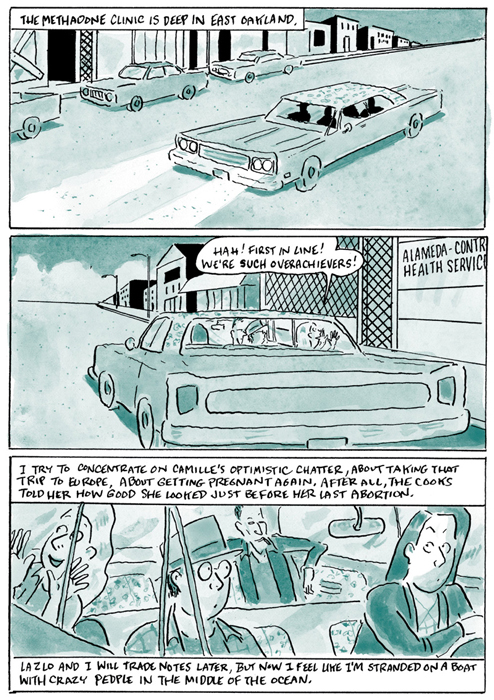
My Favorite Thing Is Monsters
Emil Ferris (Author, Illustrator) – Fantagraphics Books

This book got so much buzz throughout the year that I finally had to pick it up and check it out earlier this month. And yeah, I can see why everyone heaped praise on Emil Ferris’s first graphic novel and published work. Before we even get into My Favorite Thing Is Monsters, the personal story of Ferris is incredible enough on its own. She is 55, contracted West Nile Virus back in 2001 while working as a freelancer which hindered her work, went back to school, worked on My Favorite Thing Is Monsters, finished it, printed it, then the entire print run was held hostage at the Panama Canal because the company shipping the books went bankrupt, and finally got the book to publish this year under Fantagraphics. I mean, that should be the plot of another book, but Monsters is set in Chicago in the late 1960s and told through diary pages of our 10-year-old narrator Karen Reyes, who tries to solve the murder of her upstairs neighbor Anka Silverberg as the story weaves its way through many different throughlines. This is the most original and creative piece of work I read this year, and in a very long time. There’s a whole Where the Wild Things Are vibe to the book, with bits of pulp, noir, and horror added to the mix. Everyone is declaring this book a modern day classic. They’re not wrong.
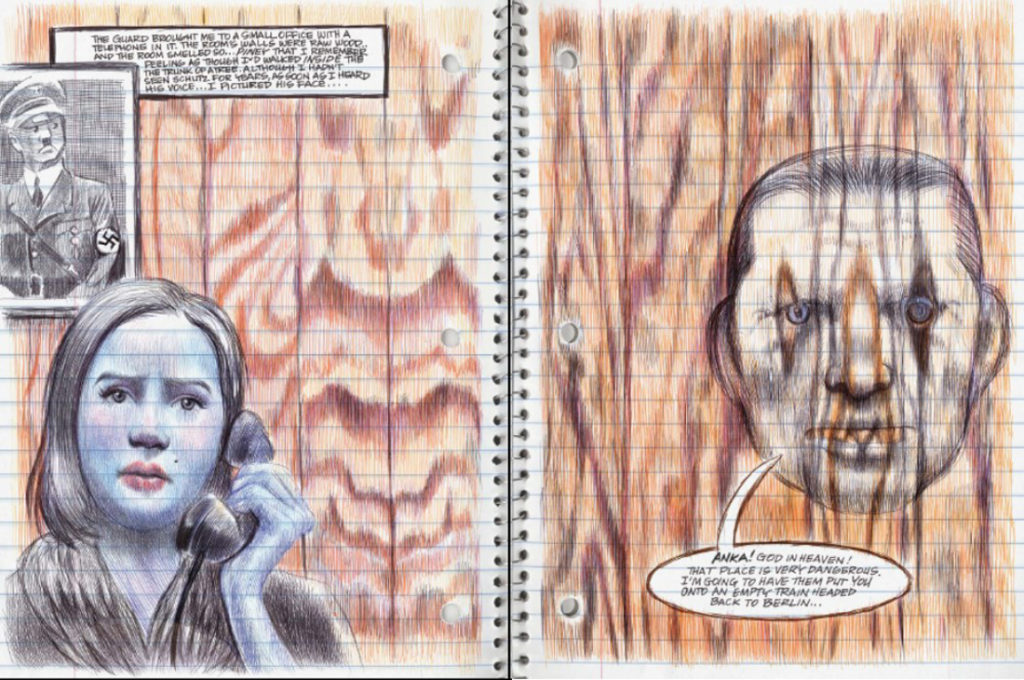
***

